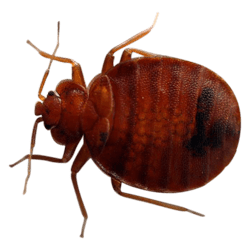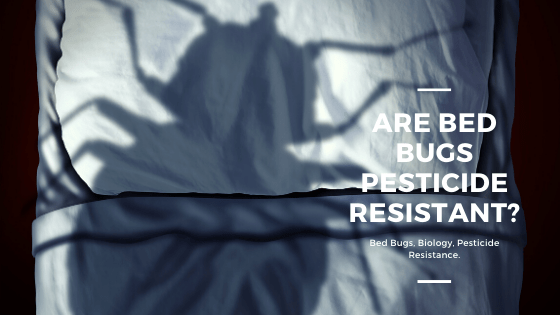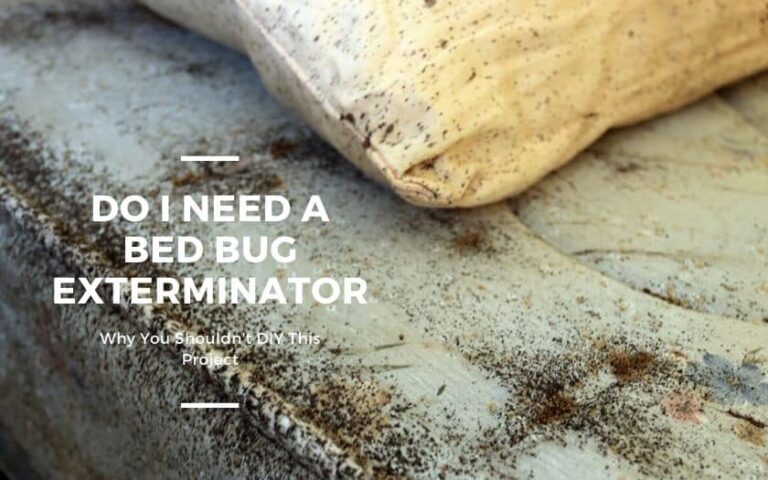Bed Bugs, Biology and Pesticide Resistance
How do I know if I have bed bugs?
This is perhaps the most common question that a bed bug exterminator gets. Bed bugs will leave certain clues when they are infesting a home. Here are 5 things to look for when trying to decide if bed bugs have invaded your house.
Fecal Matter
Bed bug fecal matter looks like black ink dots. Do you remember in school when you would get distracted and just let your ballpoint fountain pen just sit on the paper in one spot for too long? Bed bug fecal material looks exactly like that, except the little black dots will be along the seams of your mattress, near the joints of your bed frame or along the baseboards near your bed.
Exoskeletons
Like many other insect’s bed bugs will outgrow their “skin” multiple times throughout their life. When this happens, the exoskeleton is discarded. It will typically look light brown and will appear dry. Other bugs also molt in a similar way and so it is best to identify the presence of bed bugs by seeing a bed bug, or by combining multiple pieces of evidence.
The presence of bed bug eggs
Bed bug eggs are small, really, really small. They look almost like two pieces of salt stuck together. They usually appear white or clear. A bed bug will lay their eggs near where they are living. It is pretty common to see bed bug eggs, exoskeletons, and fecal matter all within inches of each other.

Bites
Bites by themselves are not strong enough evidence that you have bed bugs, after all a lot of different insects can cause bites… ants, fleas, mites, spiders, mosquitoes and other pests. If you are getting bites and have seen a doctor and in their professional opinion feel that you are getting bitten by bed bugs it is a great idea to have your home inspected by a pest control professional.
You catch a bug and blood comes out when you squish it in tissue.
Bed bugs feed on human blood and after a blood meal if the bug is squished between tissue you will see blood on the tissue. A bed bug that can feed is big enough to be seen with the naked eye. A bed bug nymph looks significantly different than an adult bed bug although they do have the same key features.
HeatRx is one of the highest-reviewed bed bug companies in the San Francisco Bay Area. Our goal is to be of value to our community. As a professional courtesy, HeatRx provides FREE bed bug inspections.
We will send a licensed inspector to your property and give you our professional opinion. In the event that we identify bed bugs, we will leave you a quote for a bed bug heat treatment, and if we are unable to conclusively identify bed bugs we may recommend a precautionary bed bug treatment. You will find that we are respectful of your time and try to be extremely helpful.
Bed bugs aren’t a “wait and see” pest. If you suspect you have a bed bug problem you will want it checked out immediately!
Bed bug populations can grow exponentially. There have been multiple studies on this topic and the information presented below was sourced from the University of Michigan Extension office.
Fact: An individual bed bug can lay 200-250 eggs in her lifetime.
Fact: Eggs typically hatch in fewer than 10 days, and can start laying eggs after their first blood meal.
Take a look at our Bed Bug Calculator to see how big a bed bug population can get in just a matter of days!
Are Bed Bugs Pesticide Resistant? They Are Headed That Way
Yes, bed bugs like many other species of insects are becoming resistant to pesticides. This is the taboo topic that pest control professionals try not to discuss at friendly gatherings. A pest control professional will blame the resistance of insects because of the application by the unlicensed consumer. The unlicensed consumer may blame it on the pest control industry and the manufacturing companies. They are both partially right.
Here is how I like to think about pesticide resistance.
There is a population of bed bugs and treatment is done using Product A. 95% percent of the population is eliminated but 5% of the population was unaffected/immune to the treatment. The unaffected bugs continue to multiply and reproduce and a few months later another treatment is done with Product A. This time only 50% of the population is eliminated, and the unaffected bed bugs continue to multiply. Months pass and another treatment is provided using “Product A”; this time only 25 percent of the population dies. Months pass and another treatment is provided using “Product A”; this time only 5 percent of the population dies and the bed bugs rejoice. This describes a population has become resistant to Product A.
The fact is an unlicensed consumer application can cause this issue, and the same thing can happen by uniformed licensed professionals.
One way to avoid creating bed bug resistant populations is to alternate products or use complementary products during treatments. In the previous example, Product A killed 95% of the population, if another complimentary material Product B was used there is a good chance that the other 5% of the population would have perished. If there are no survivors, then there is no population to become resistant. Obviously, this is simplifying the issue but the basic fundamentals are there.
Another way to avoid creating bed bug resistant populations is to eliminate the bed bugs using something other than pesticides. Did you know that every organism has a thermal death point? A bed bug cannot live very long in temperatures above 120 degrees Fahrenheit. A bed bug heat treatment will eliminate all stages of a bed bug population even the eggs.
HeatRx is a bed bug heat treatment company that operates in the Bay Area of California. Our treatment involves the use of sophisticated heaters that brings the treatment area to temperatures in excess of 120 degrees Fahrenheit and then we maintain the temperatures at this level for 5 hours. The heat will penetrate mattresses, box springs, bed frames and other furniture. As an added precaution and to prevent the recurrence of bed bugs we will apply a conventional residual application that will help discourage a future bed bug infestation.
“Know Thy Enemy” – Sun Tzu’s The Art of War
The bed bug family tree isn’t something that most people consider very often. The insect that we most often consider when we think of a “bed bug” is officially called Cimex lectularius. We should not forget about its sibling the tropical bed bug, Cimex hemipterus. It would, of course, be rude to not mention another relative the bat bug, Cimex pilosellus. Each of these insects can cause distress and discomfort.
Bed bugs are the ultimate nuisance pest. Bed bugs can be difficult to eliminate and nearly everyone agrees that exterminating bed bugs isn’t a weekend “do-it-yourself” project. A successful bed bug treatment requires specialized equipment, advanced training, professional products and a keen sense of detail.
Exploring the Bed Bug Family Tree
In the scientific Family: Cimicidae, there are a number of bloodsucking insects. The most common is the Cimex Lecturlarius, this is the bug that is typically associated with the term bed bugs and is responsible for most of the bed bug news and bed bug extermination efforts in North America. The second most popular member of this Family is the Cimex hemipterus commonly referred to as the “tropical” bed bug. There is the Cimex pilosellus, which is often considered a bed bug, but it is not a bed bug it is a bat bug. Bat bugs prefer to spend time with roosting bats, but sometimes when they tire of the bats they will seek out the company of humans.
There is also the Swallow Bug Oeciacus vicarius, which generally isn’t a problem for humans unless you allow swallows to build nests on your home. There is also the Poultry bug, Haematosiphon inodorus which prefers the company of chickens and turkeys. The Poultry bug shouldn’t cause humans any trouble unless you are sleeping or watching TV in the chicken coop at night. Finally, there is the Owl bug Hesperocimex coloradensis these bugs prefer the company of owls and woodpeckers. My grandmother used to host an endangered species of owl in her grain silos, there is a chance that these type of bugs could have been in that nest. In the next paragraphs we will explore the three most common types of bed bugs.
Cimex Lecturlarius: The “Typical” Bed Bug
When most people think of bed bugs they are thinking of the Cimex Lecturlarius. These bugs are small but larger than a typical ant. An adult bed bug is about the size of a pill bug “rollie pollie”.
The California Department of Public Health describes bed bugs this way:
“Adult bed bugs have flat bodies about one-quarter of an inch in length; they are copper-colored and wingless. Young bed bugs are nearly colorless and very small (1/16 inch). Bed bugs do not fly; they either crawl or are carried from place to place. When a bed bug feeds, its body swells and becomes bright red, making it appear to be a different insect. In homes, hotels, or other dwellings, bed bugs feed primarily on human blood, usually at night when people are sleeping.”
https://www.cdph.ca.gov/Programs/CID/DCDC/Pages/BedBugs.aspx
All bed bugs except for eggs will seek out a blood meal. Bed bugs don’t have to eat every day. In fact, many studies report that bed bugs can go months without a blood meal. A good strategy to implement in a war against bed bugs is to install bed bug mattress encasements and bed bug dead fall traps. Additionally, there are a number of proactive bed bug treatments that can reduce the likelihood of a bed bug infestation.
Here is a picture of a bed bug:

Cimex Hemipterus: The “Tropical” Bed Bug
It is important to note that tropical bed bugs aren’t extremely common in the Bay Area, but since bed bugs are excellent hitch-hikers readers should be aware that tropical bed bugs can become a problem almost anywhere. The tropical bed bug gets its common name because it is more likely found in tropical and sub-tropical areas of the world. In 2016, Entomology Today, a respected website associated with the Entomological Society of America published an article online entitled “Tropical Bed Bugs Found in Floriday after 60-year Absence.”
“My colleagues and I received a bed bug sample in October 2015 that did not look similar to the common bed bug that we were so accustomed to seeing. Upon closer examination, we realized that this species, although very similar to the common bed bug, had a different shaped pronotum, or “neck region.” The common bed bug has a pronotum that forms a U-shape, with wing-like extensions on either side, but the tropical bed bug doesn’t have this characteristic U-shape.” – Brittany Campbell, Entomology Today
Cimex Pilosellus: The “Bat” Bug
Even experienced bed bug exterminators are often confused by the bat bug. At a casual glance, a bat bug looks very much like a regular bed bug. A bed bug exterminator may do an extremely detailed treatment for bed bugs only to be notified from the client that the bed bugs are back a short time later. When this happens the bed bug exterminator may wonder what went wrong? A deeper investigation will begin and often the culprit will be bat nest roosting in the attic. Until the bats are removed the bat bugs will continue to be a problem for the occupant of the house.
The typical homeowner won’t usually have a problem with bats and therefore will not have a problem with bat bugs. Eliminating a bat bug infestation takes careful planning and execution. In many areas bats are protected and must be dealt with by pest control professionals who specialize in the control and relocation of bats. Unfortunately, bats have a bad reputation and are not considered in a favorable light by many homeowners. When I was a boy scout everyone in my troop was wary of bats. All boy scouts know that every bat will give you rabies if it bites you… it turns out boy scouts know a lot of things that aren’t exactly true. Every bat doesn’t have rabies, and most bats are thrilled to leave you alone and be left alone. Bats are beneficial creatures and should be treated with care and respect.







